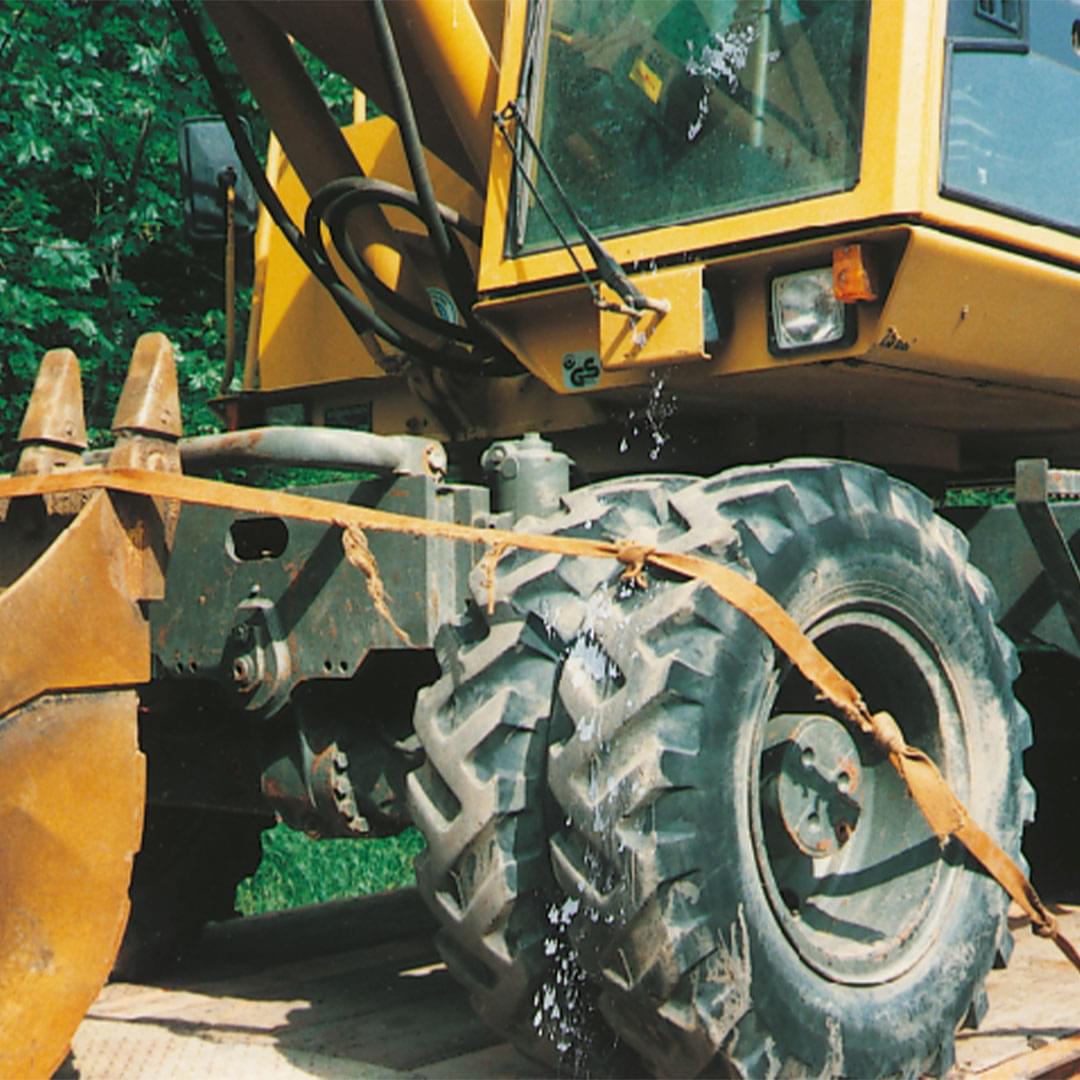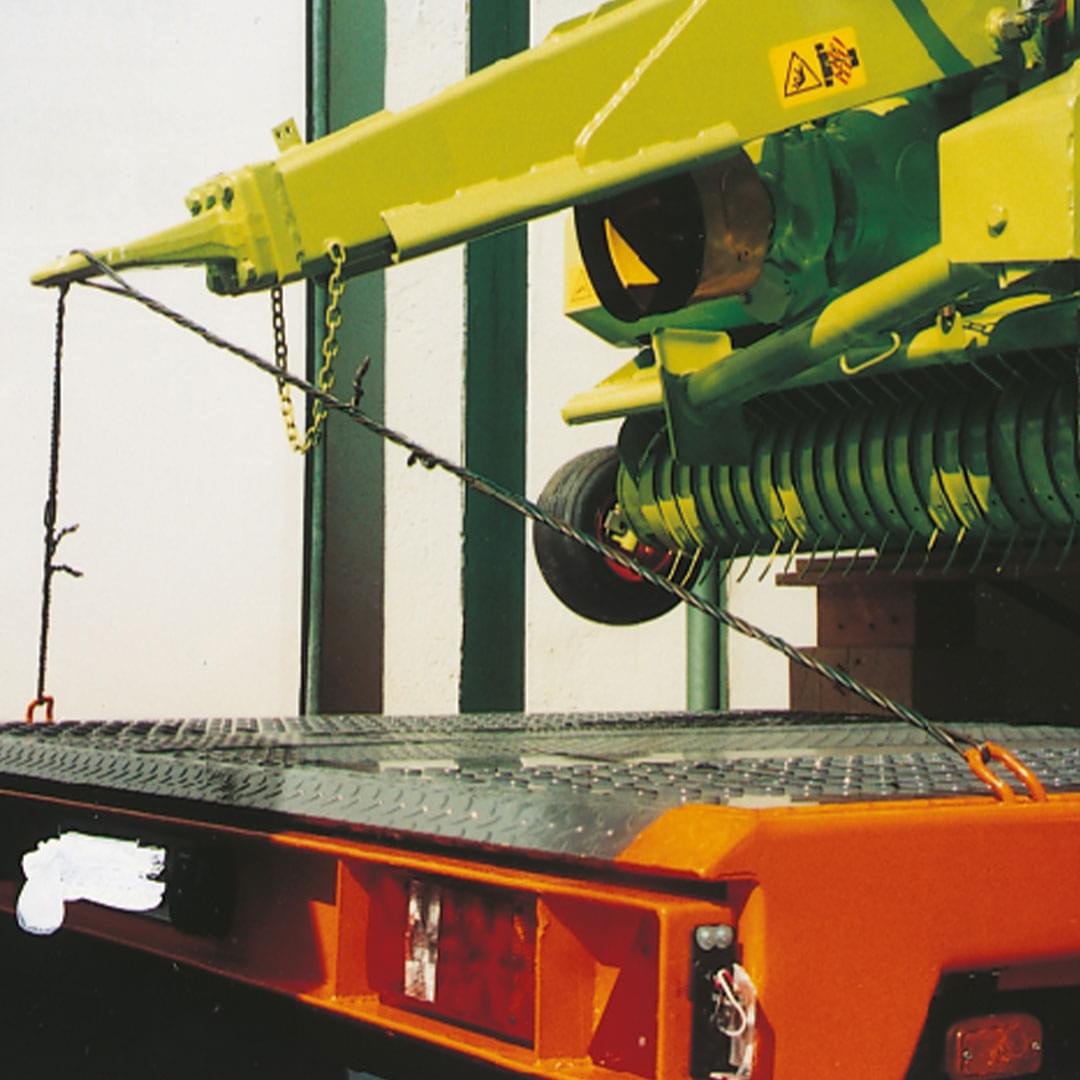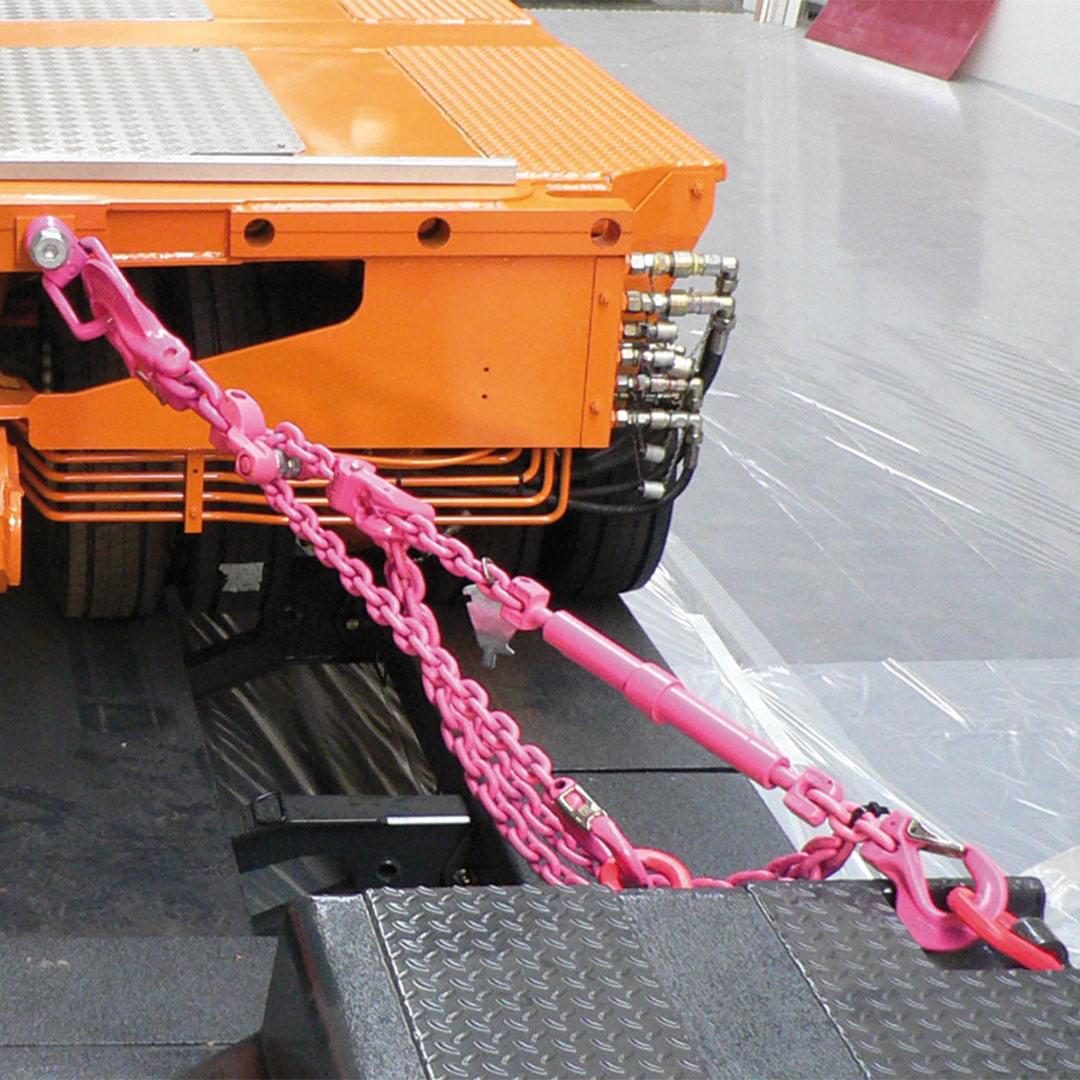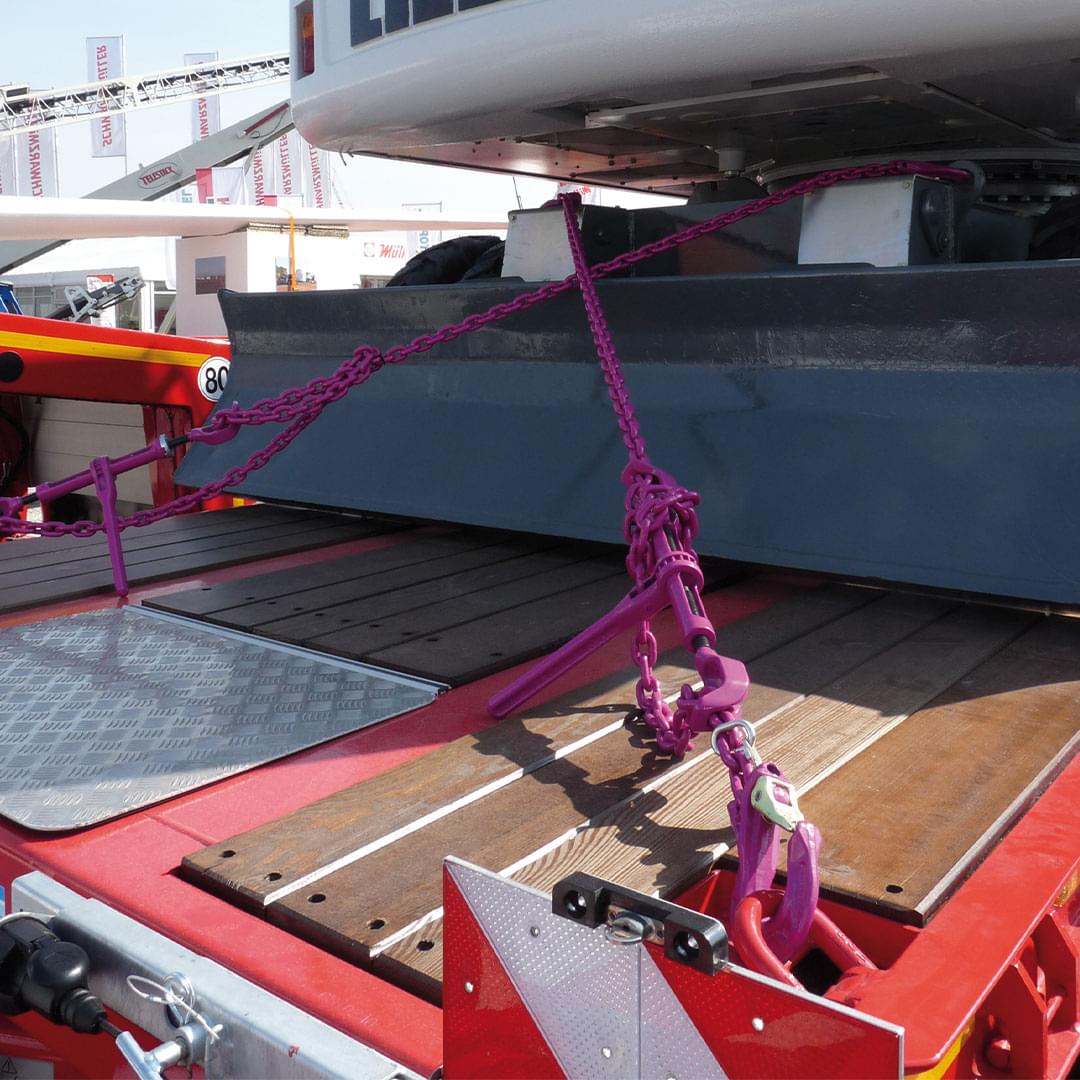To prevent anything slipping dangerously during transport, you should always make sure your load is secured as well as possible. This is not only a recommendation, it is an absolute necessity which is prescribed by legislation. Quite often, the forces which occur during driving are underestimated and the strength of the lashing equipment used overrated. For this reason, it is important for you to think about the right load securing means before a spectacular accident happens.
The RUD ICE lashing chain stands for a particularly high level of quality and safety. It not only meets the European standard, but exceeds it in many points. One particular advantage is its low weight. ICE has a lashing capacity (LC) up to 60 % higher than conventional Grade 8 – with the same nominal thickness.
Are you looking for the best possible lashing solution for your application? Our specialists will provide you with customised advice.
Contact us nowWhat should you know about load securing during road haulage.
The German Road Traffic Regulations (StVO) and the DGUV Regulation “Vehicles” are directed at everyone who is responsible for the proper loading of the vehicles. They require the load, lashing chains, equipment and other loading devices to be stowed in a roadworthy manner and specially secured against falling and avoidable noise.
For the user, this means that you must secure the load in such a way that it cannot slip – whether it is light or heavy. You are urgently advised against load securing “by instinct”: the actual forces acting on the loading area can only be mastered on the basis of concrete calculations.
Image: Police de la Route Liège (B) – Raymond Lausberg
Did you know that 0.8 times the load weight pushes in the direction of the driver’s cab during full braking (including downhill) and that half of the load weight pushes in the direction of the drop sides when driving round bends and when starting up? Lashing means must hold these forces secure. A basic distinction is made between two possible types of lashing: tie-down lashing on the one hand, and direct lashing on the other, which includes diagonal lashing.
When heavy loads have to be lashed directly, professionals generally tend to use the lashing chain. Modern lashing chains, particularly ones made of high-strength steel, offer unrivalled advantages. RUD has carried out pioneering work here and was the first manufacturer in the world to receive the approval stamp D1 for round steel chains of the highest Grade 12 as long ago as in 2007. Thus the ICE product range was born.
Tie-down lashing
Tie-down lashing is the most common type of lashing for road haulage. The reason for this: most loads are so wide that it is only possible to secure them by vertical or slightly inclined tie-down lashing. The basic idea behind tie-down lashing is to increase the natural burden by applying pre-tension forces and thus to increase the frictional force which prevents the load from slipping.
Find out more about tie-down lashing now
Direct lashing.
Diagonal lashing, which is a type of direct lashing, should always be used in preference to tie-down lashing, since no special static pre-tensioning forces need to be applied here. In contrast to tie-down lashing, the lashing means/lashing points are only subjected to light pre-tensioning. The lashing means are only subjected to higher loads if the forces occur as a result of heavy braking, sudden starting or driving round tight bends.
Find out more about diagonal lashing now
Load securing tips for heavy haulage.
A particular challenge for the load securing of heavy loads: if you use more than two lashing means per direction for direct lashing, it is still only two of the lashing means used that will absorb almost the entire force. The solution: divert the lashing chains so that they lead from the load to the vehicle in double strands. The result is four load-bearing strands in one direction.
A compensation of forces in the double strands must result from the diversion. You can achieve this, for example, by diverting around a round lifting bollard. Or even better: through VIP lashing chains with a reversion wheel. However, you cannot calculate this kind of load securing in the conventional manner. Get in touch with us – our specialists will be pleased to advise you.
More lashing tips on the subject of heavy haulageNo lashing points? Endless chains are the solution.
A frequent challenge for direct lashing is when there are no lashing points on the load – e.g. in the chase of stone blocks or precast concrete parts. A sensible and particularly flexible solution for this is the endless chain. For this “head lashing”, choose an endless chain with the same lashing capacity (LC) as the lashing chain. And because you “double up” the chain here, sharp edges on the endless chain are not a problem any more.
The endless chain with the RUD ICE multi-shortening claw is even more versatile. Simply connect a piece of the ICE chain to the ICE multi-shortening claw to form a closed chain. This allows the endless chain to be opened without a tool, and its diameter can be adjusted.
More tips for lashing with endless chainsTips for skip loaders: optimum load securing with angled lashing.
For example, trough container lashing only by tie-down lashing – e.g. by Y lashing – is not sufficient. The only safe variant is angled lashing, for example V, X or trapezoidal lashing with a fixed connection at the lashing point and at the suspension pin.
Caution: the load can slip when passing the chain through the lashing point. This means that there must be a turnbuckle on each lashing strand. The flatter the vertical angle α, the higher the container weights that you can transport – or the thinner the chain that can be used.
More lashing tips on the subject of skip loaders



Safe bet. The RUD App "Lashing means calculation".
Would you like to know within a few minutes how to secure your current load ideally? With our free App, you'll be on the safe side. Just type in the specific facts like mass, lashing methode, transporting goods, inclination angle and friction factor - and you'll receive a detailed recommendation. Test it now!







